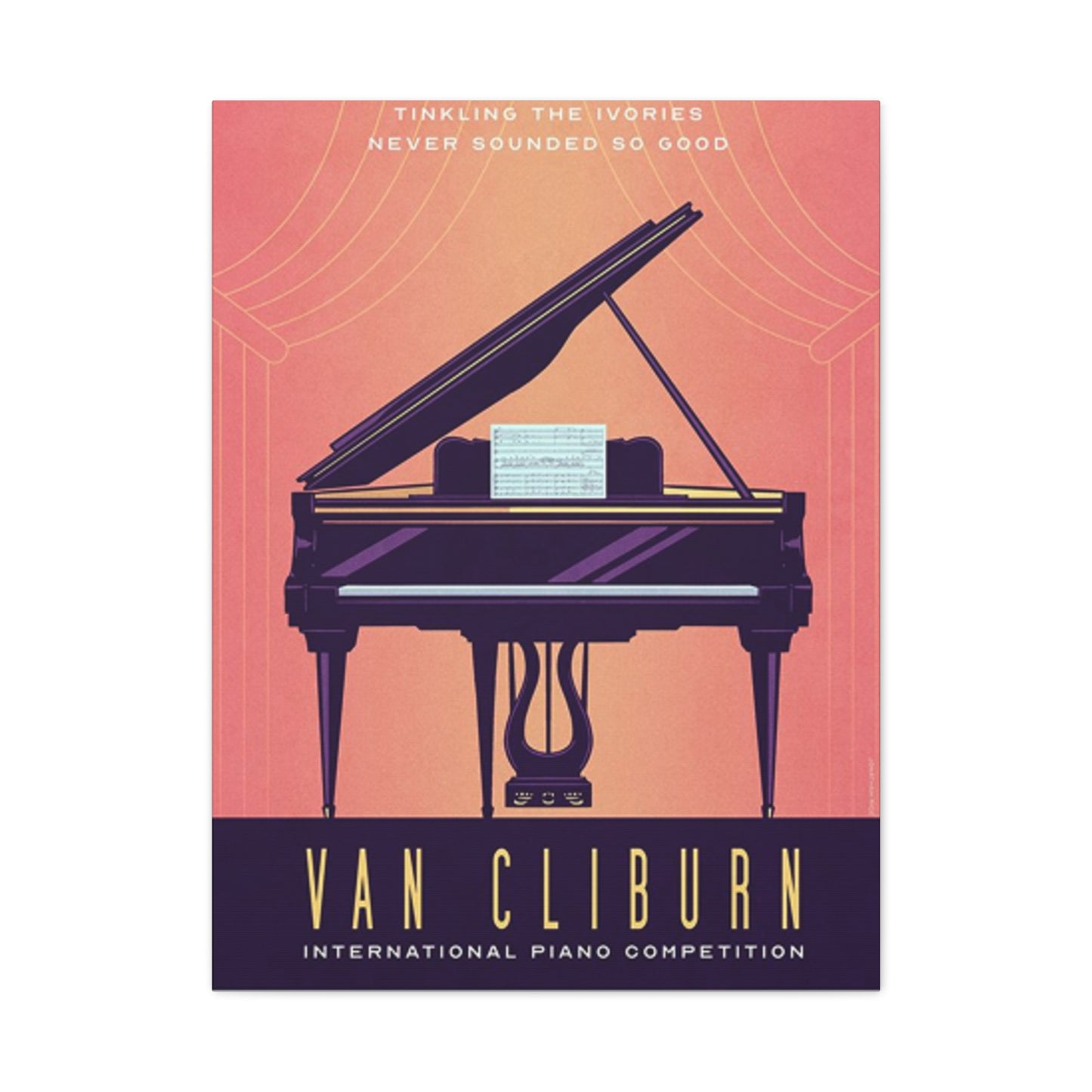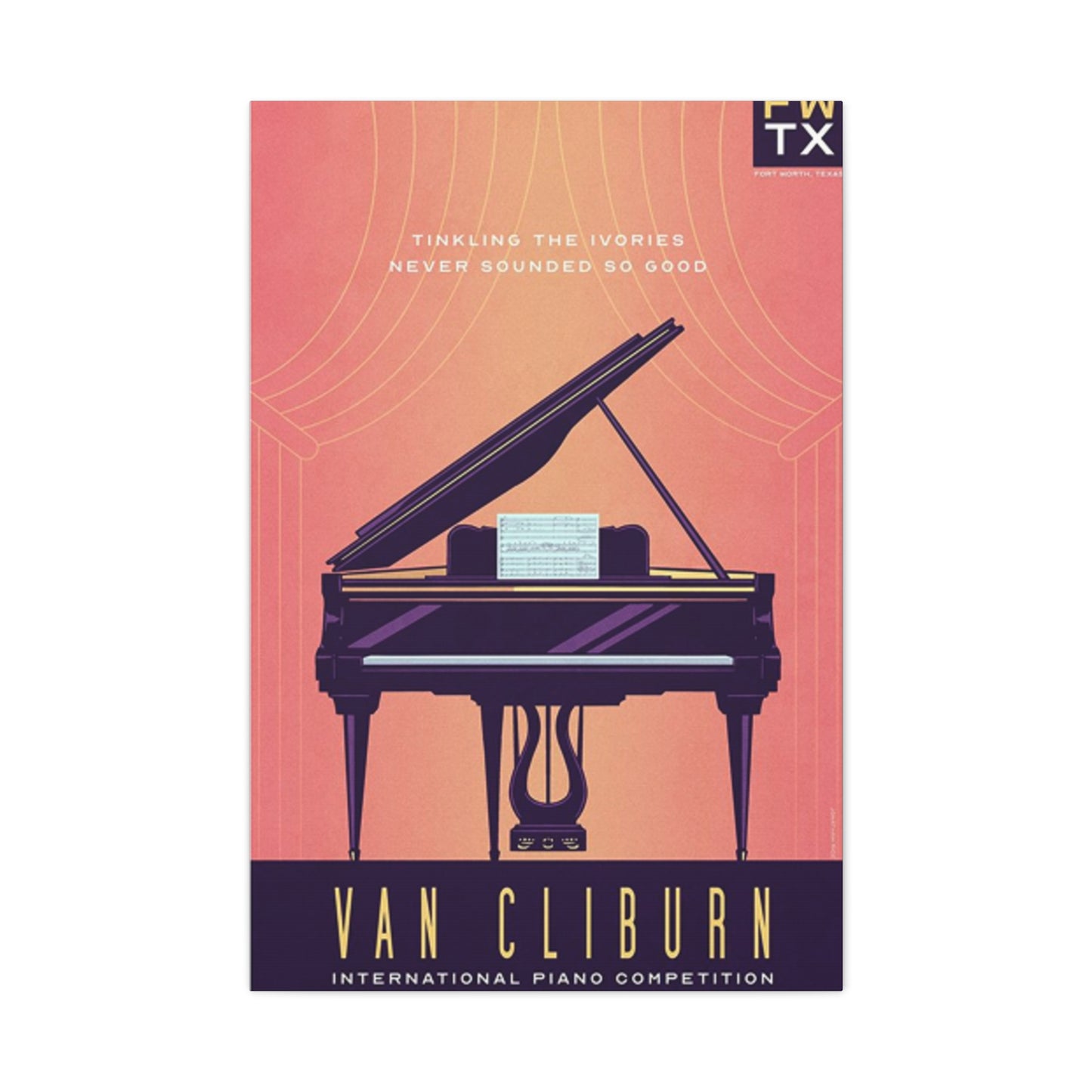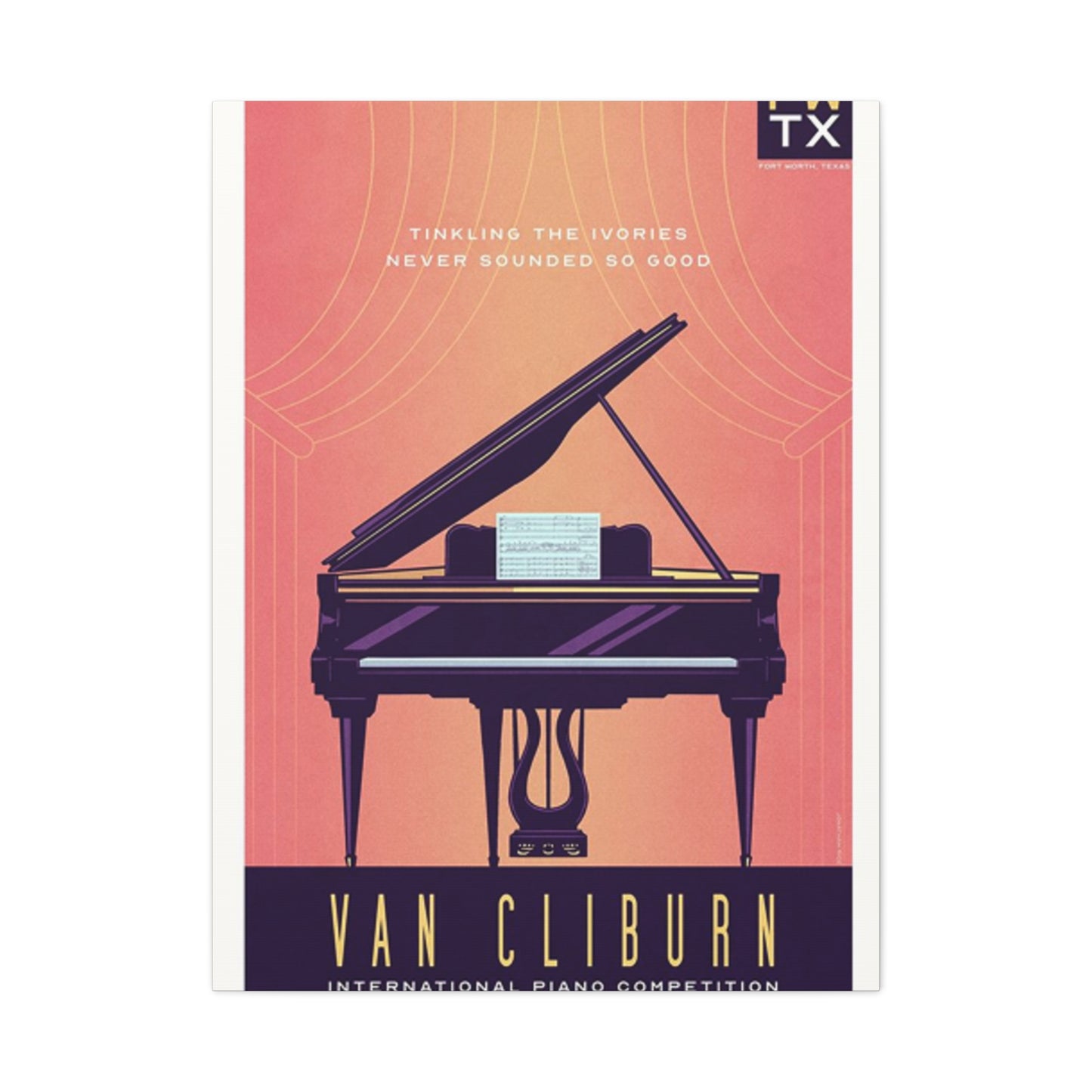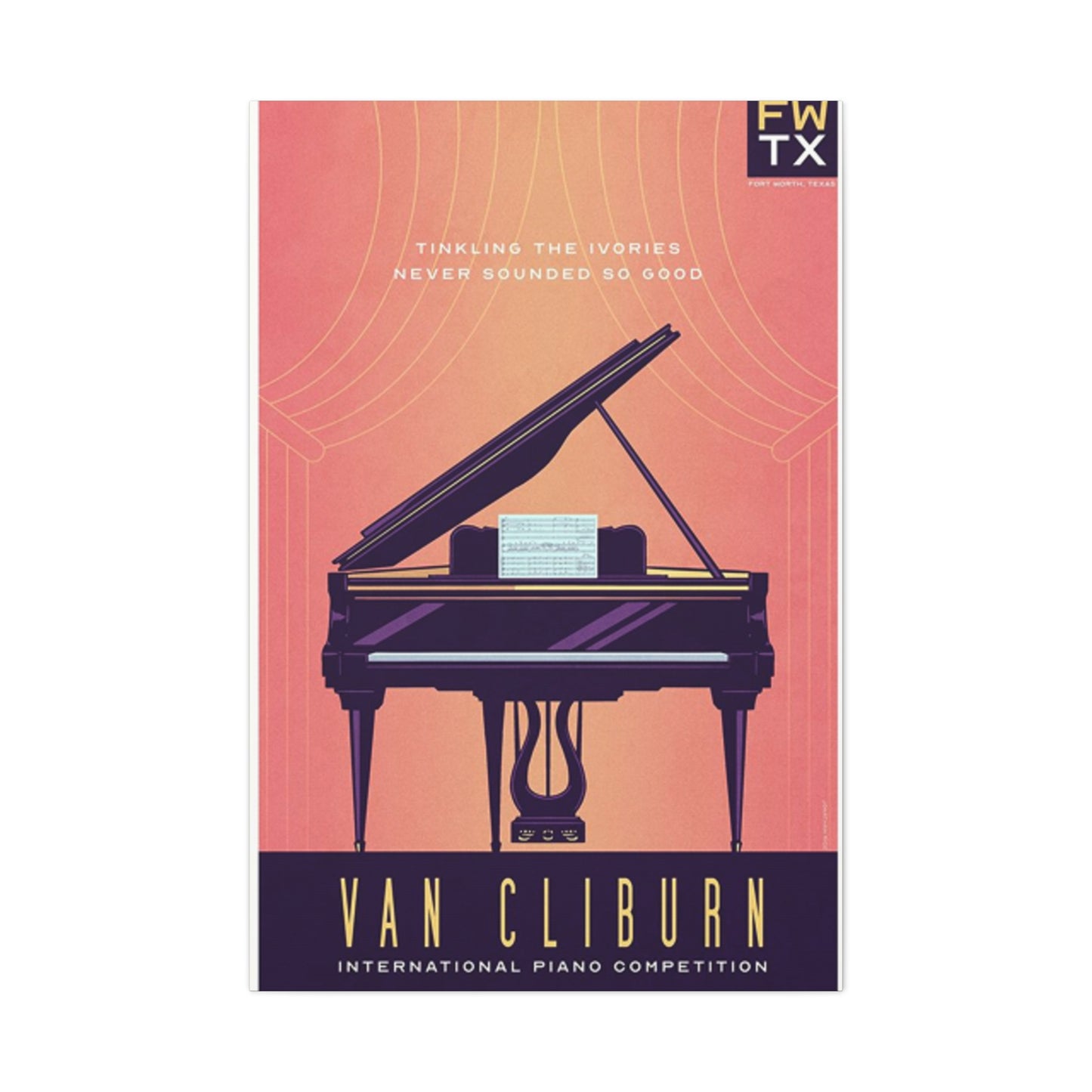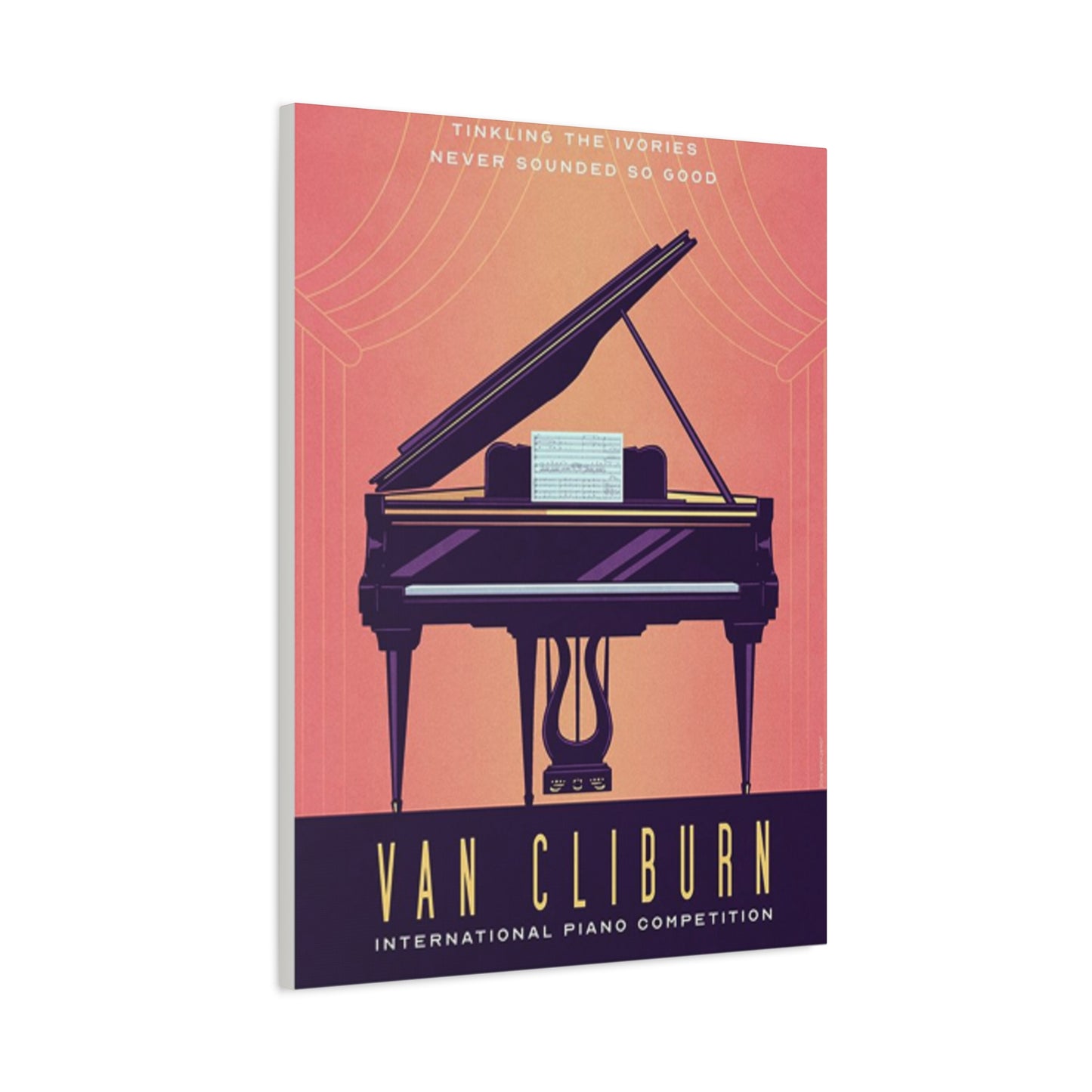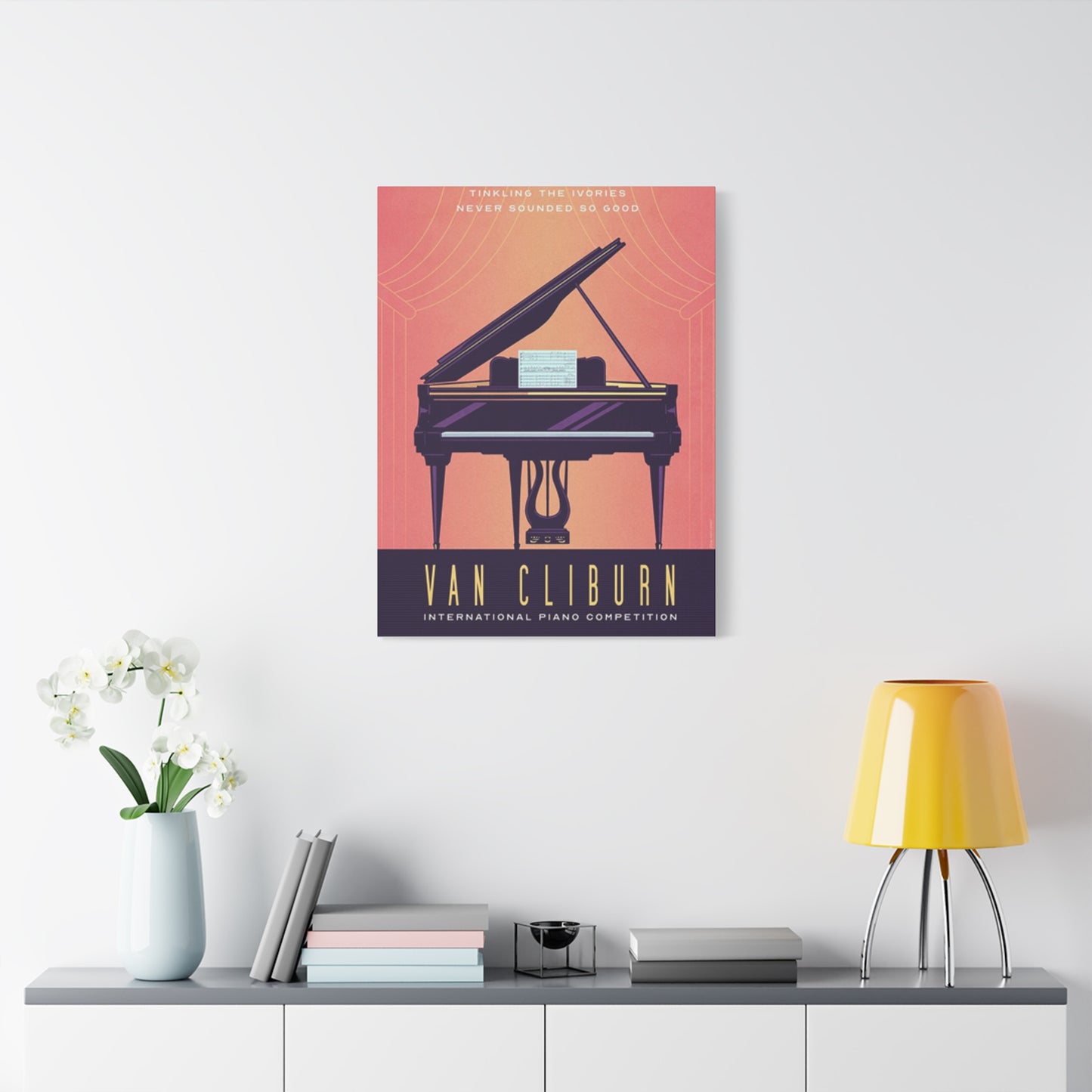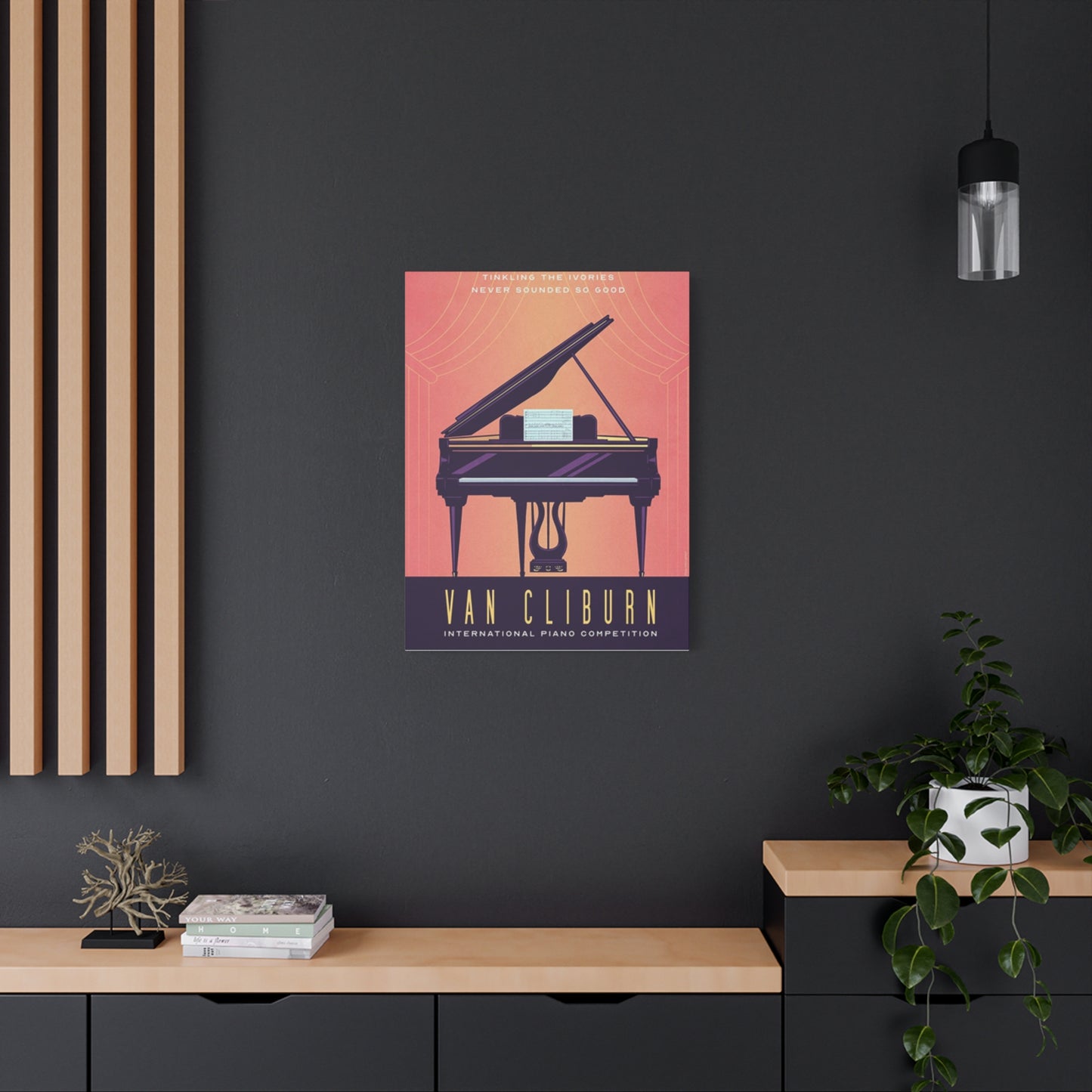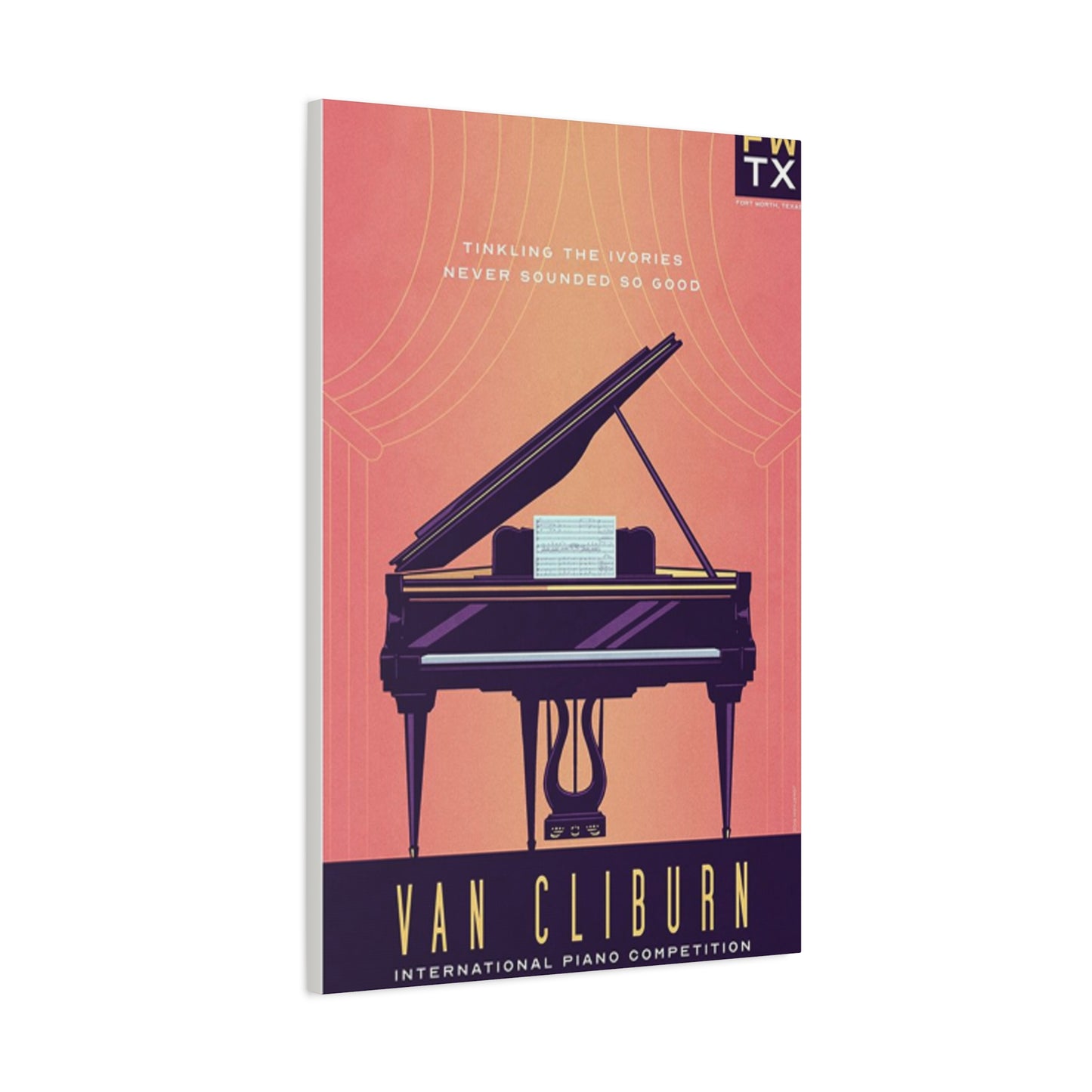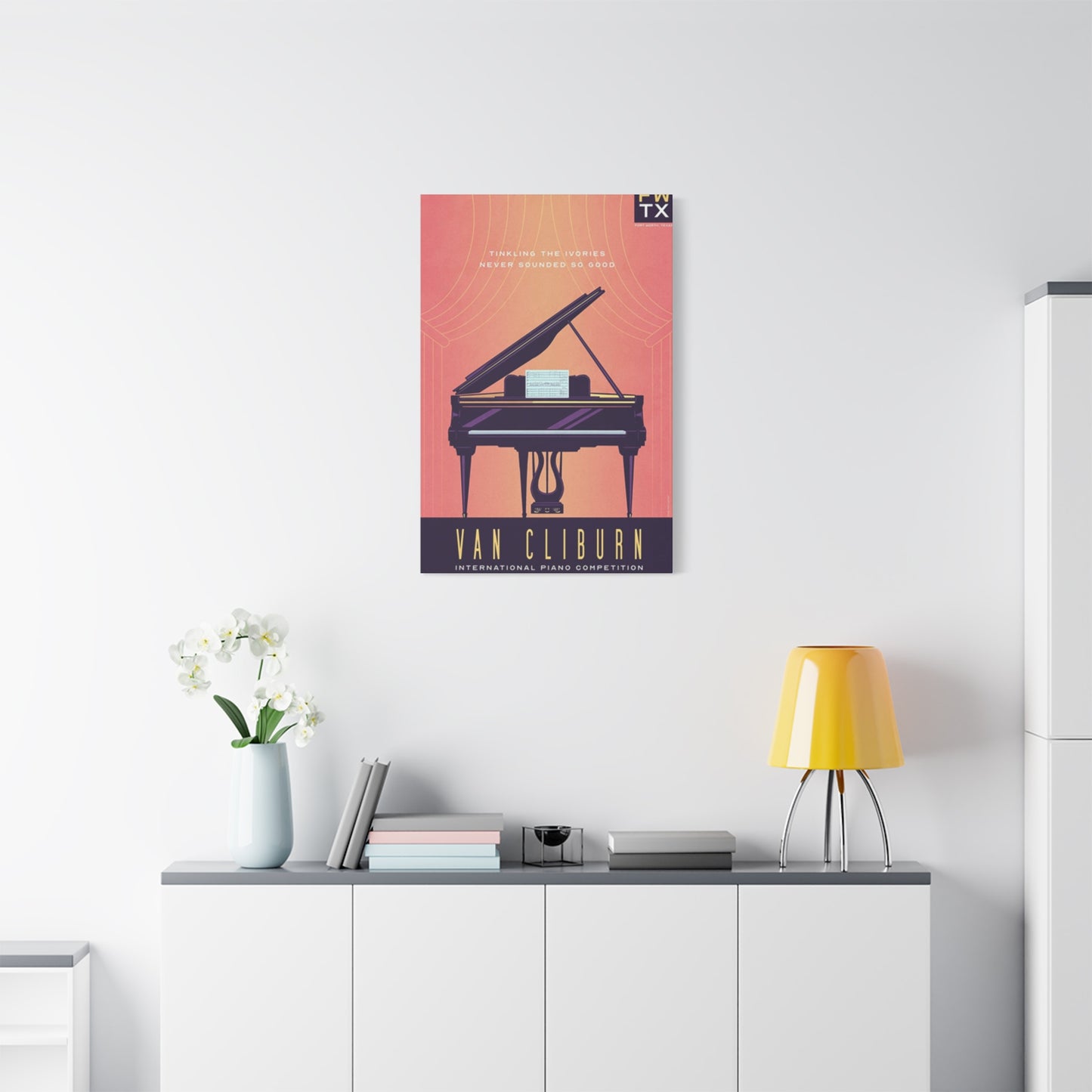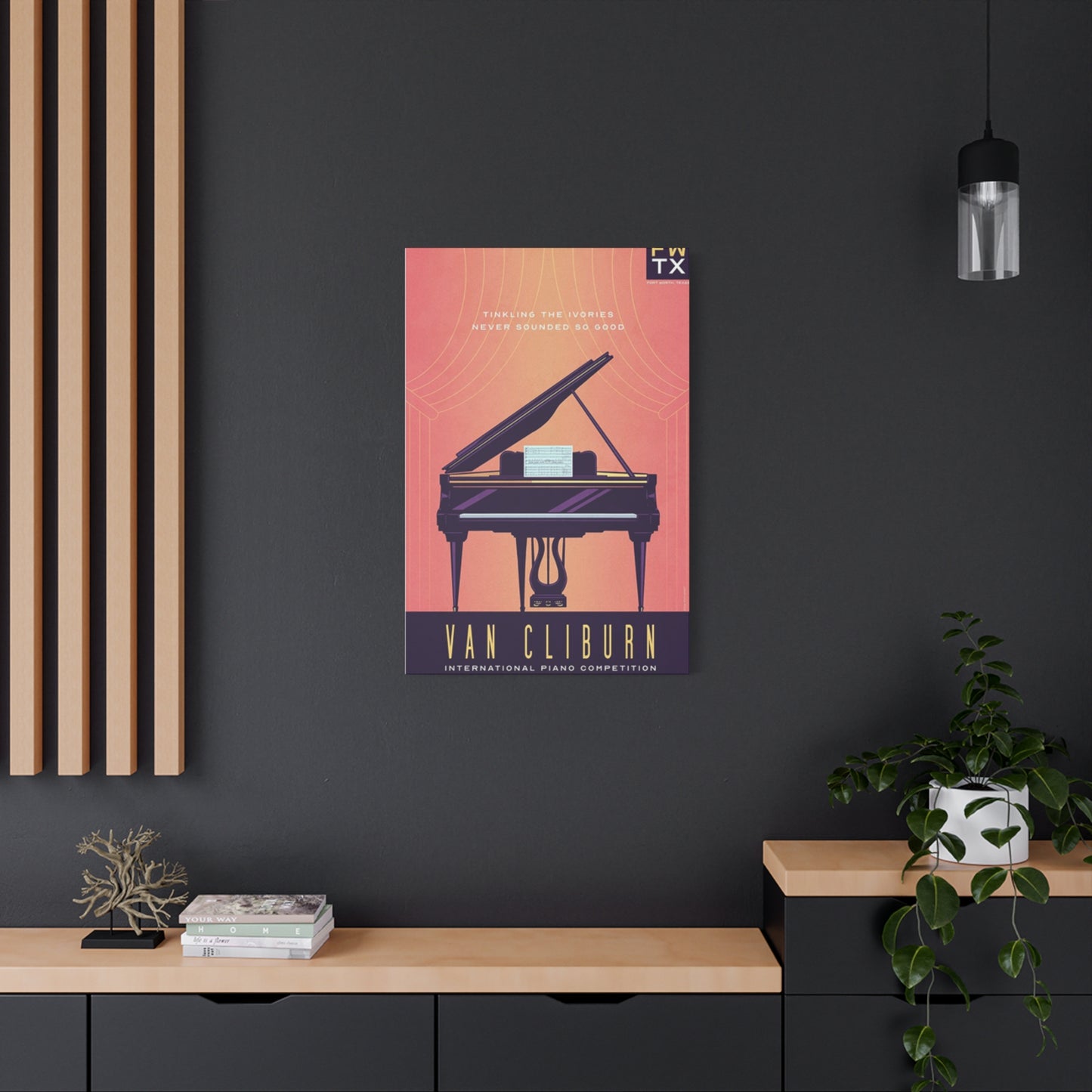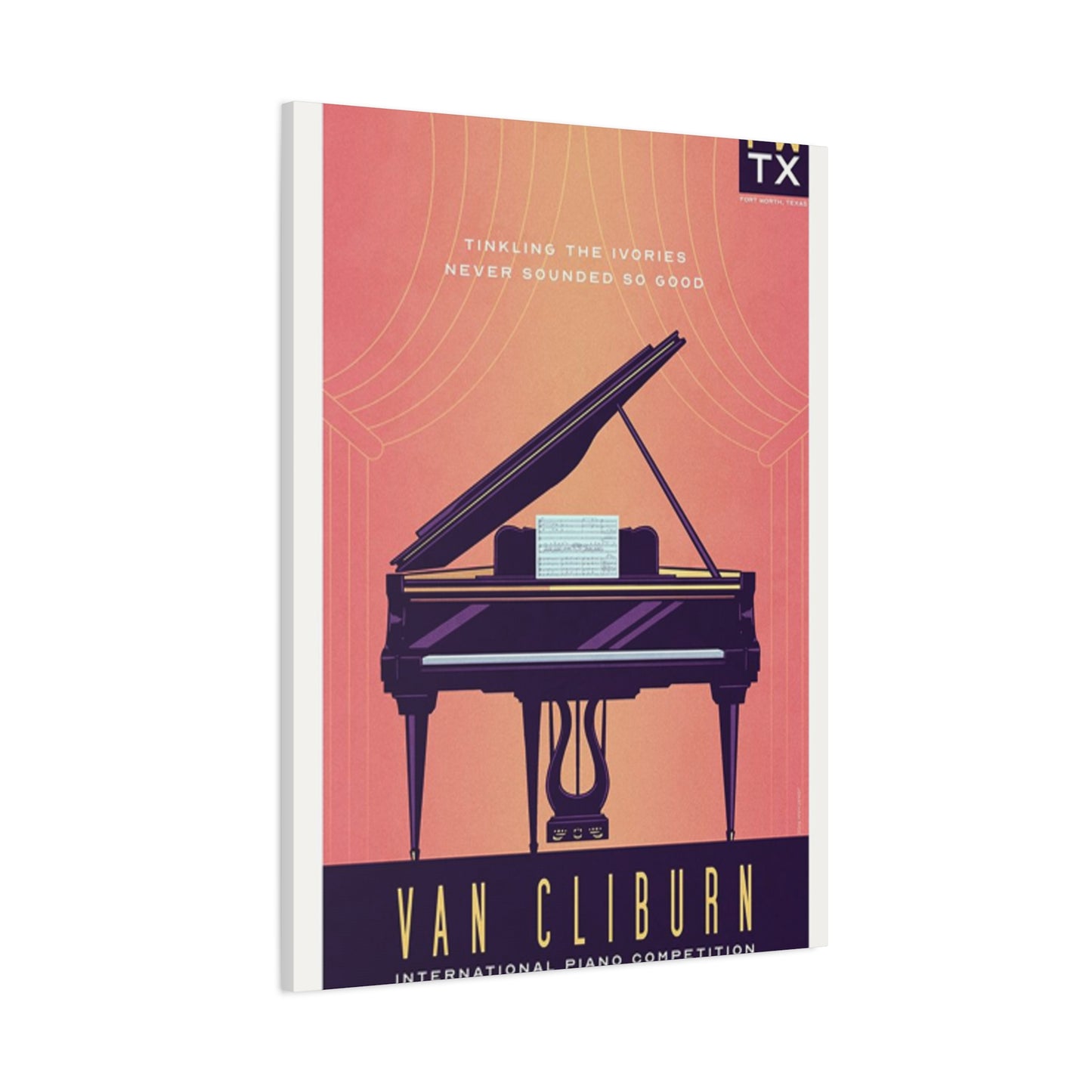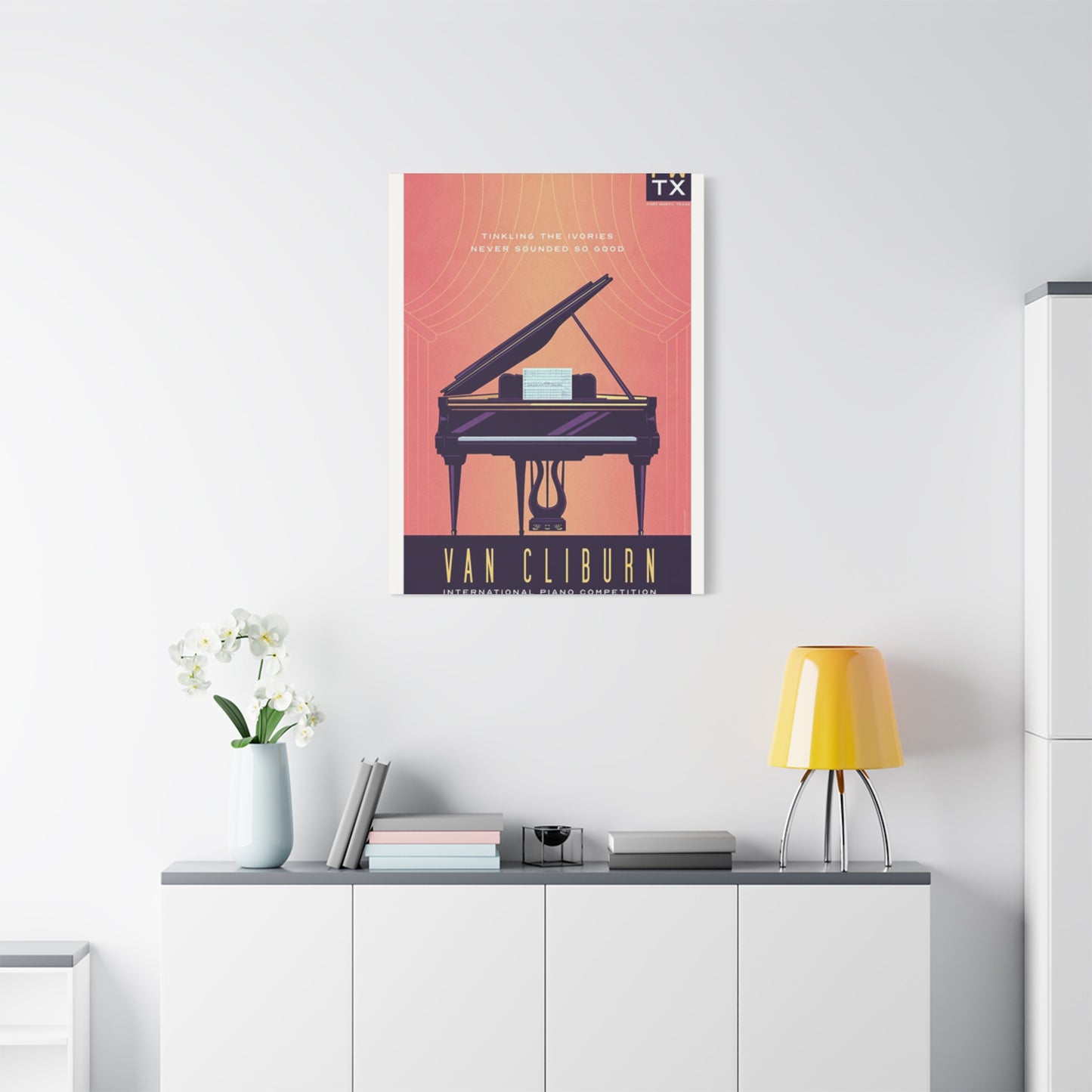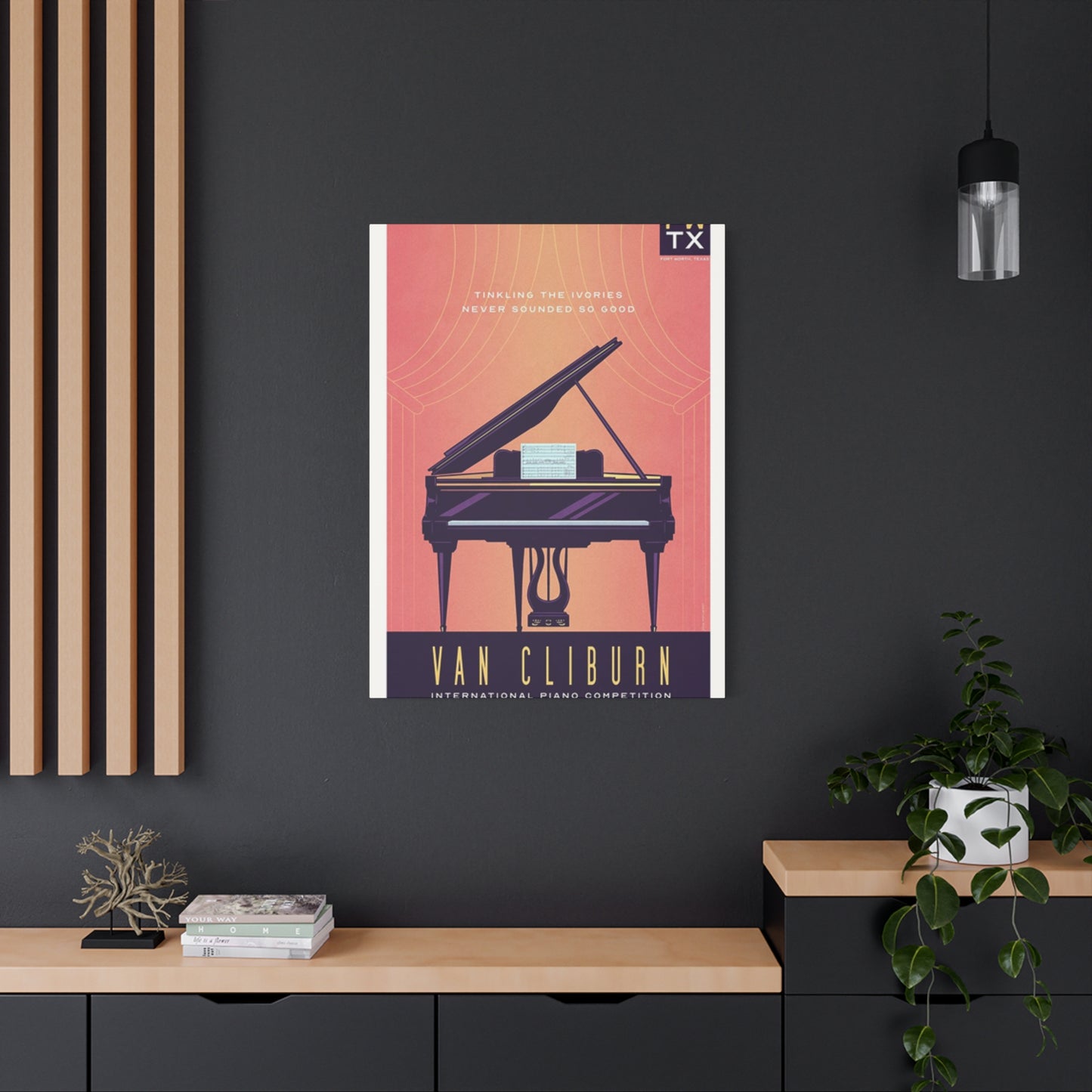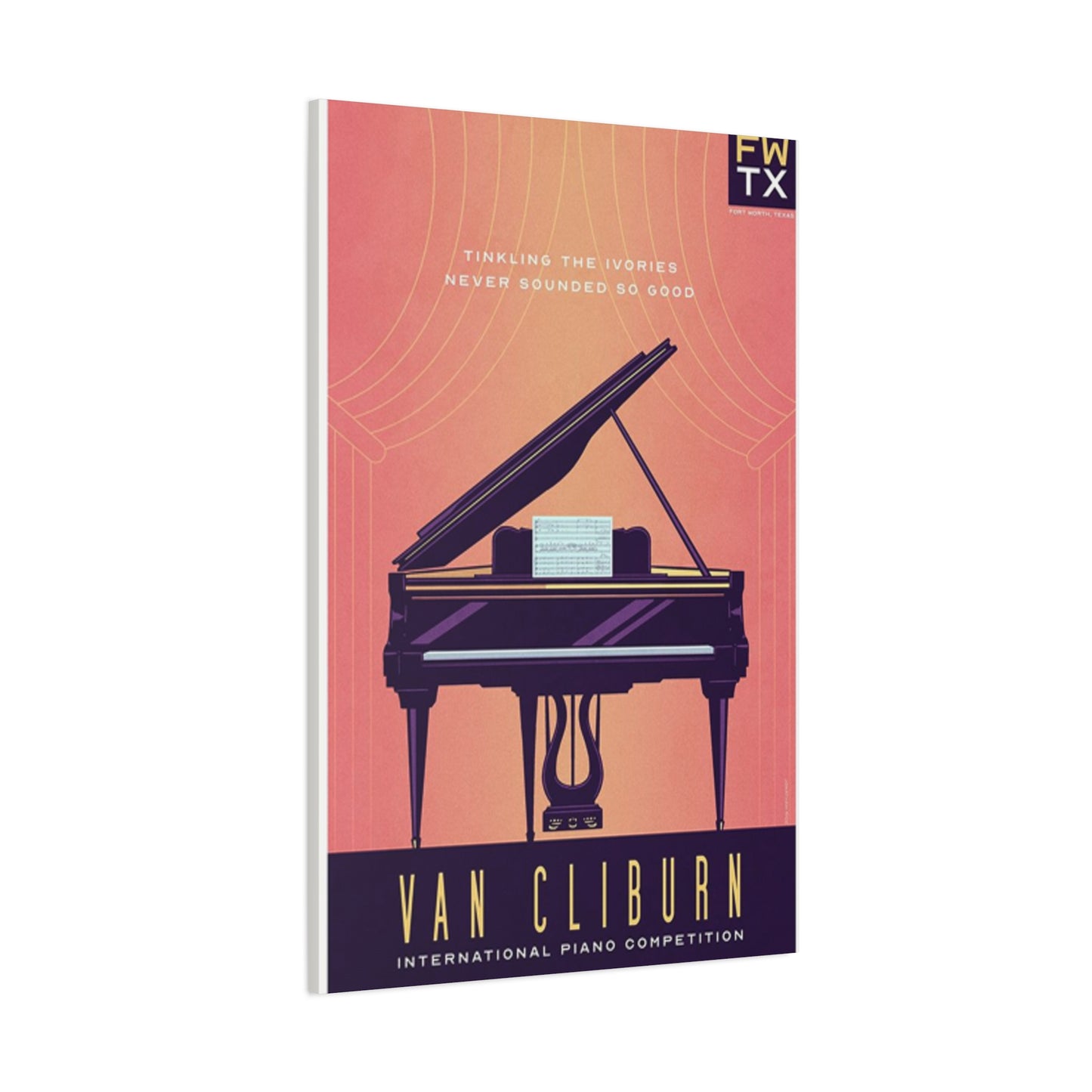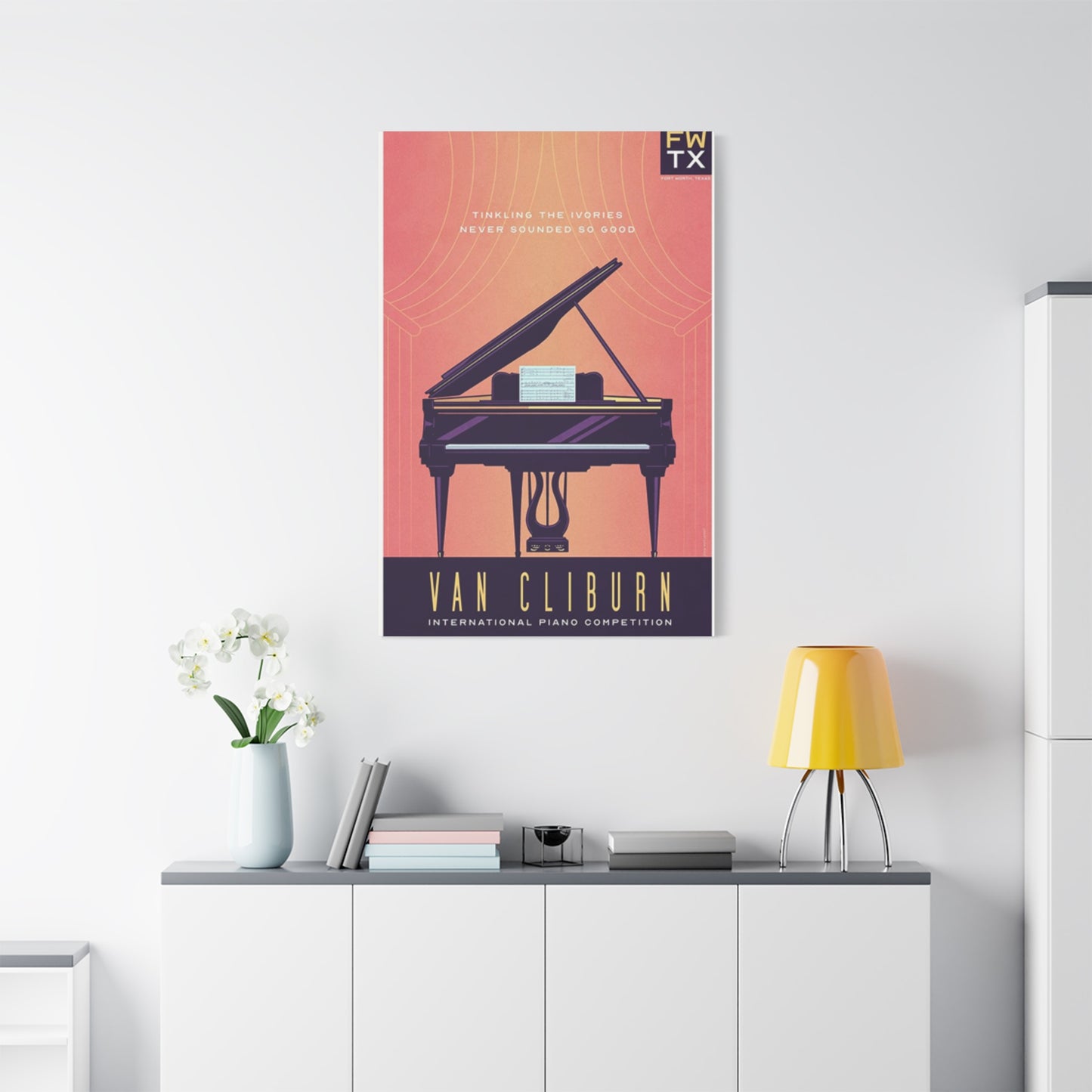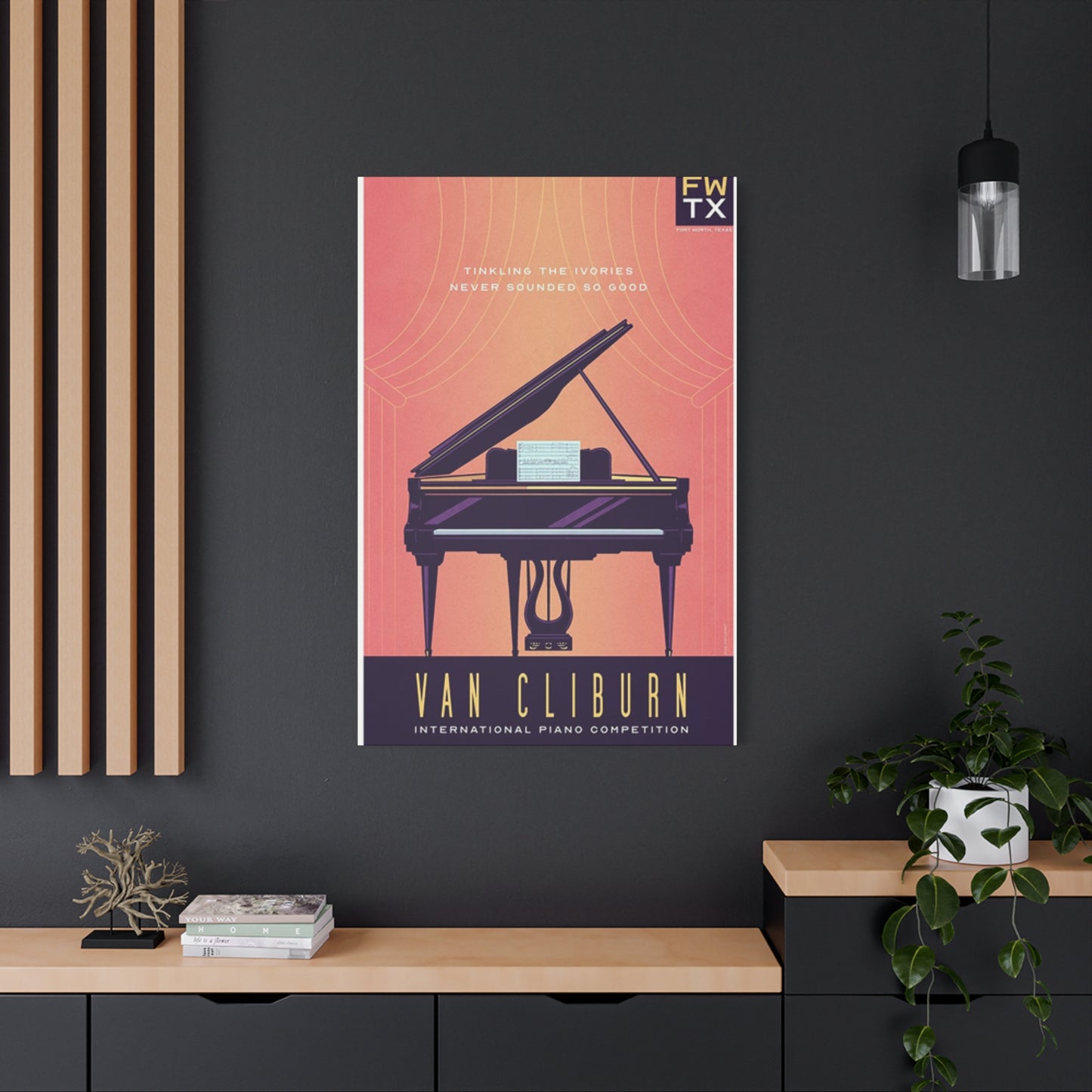Van Cliburn Wall Art: Inspiring Decor for Music and Art Aficionados
The world of classical music has witnessed countless virtuosos throughout history, yet few have captured the hearts and imaginations of audiences quite like Van Cliburn. This remarkable American pianist transcended cultural boundaries during one of history's most turbulent periods, bringing people together through the universal language of music. Today, art enthusiasts and music lovers alike seek to preserve his extraordinary legacy through stunning visual representations that grace the walls of homes, music studios, concert venues, and cultural institutions worldwide.
The intersection of classical music appreciation and visual artistry has created a unique niche in home decor and interior design. Wall art featuring legendary musicians serves not merely as decoration but as a powerful statement of cultural values, artistic appreciation, and personal identity. When discussing visual tributes to piano virtuosos, the representation of this iconic American pianist stands apart for its ability to evoke emotion, inspire creativity, and connect viewers to a pivotal moment in musical history.
This comprehensive exploration delves into the multifaceted world of visual tributes honoring one of America's most celebrated pianists. From canvas prints that capture his intensity at the keyboard to sophisticated portraits suitable for refined interiors, these artistic pieces serve various purposes across different settings. Whether adorning the walls of a dedicated music studio, enhancing the ambiance of a concert hall, or adding cultural depth to a residential space, these visual representations offer something meaningful for every classical music enthusiast.
The journey through this artistic landscape will examine the historical significance behind these visual tributes, explore the various styles and mediums available, discuss appropriate placement in different environments, and provide insights into selecting pieces that resonate with individual tastes while honoring the profound legacy of this musical giant. Additionally, we will investigate how these artistic representations contribute to keeping classical music relevant in contemporary culture and inspire new generations to discover the timeless beauty of piano performance.
Honoring a Musical Icon Through Visual Celebration
The artistic celebration of Van Cliburn through wall art represents more than simple decoration; it embodies the preservation of cultural memory and the continuation of musical legacy. This Texas-born pianist achieved what many thought impossible during the height of Cold War tensions, winning the inaugural International Tchaikovsky Competition in Moscow in 1958. His victory resonated far beyond the concert hall, becoming a symbol of artistic excellence that transcended political divisions. Visual representations of this historic figure allow contemporary audiences to maintain a tangible connection to this extraordinary achievement and the man behind it.
Creating visual tributes to legendary musicians requires careful consideration of multiple elements. Artists and designers must capture not only the physical likeness of the subject but also convey the emotional intensity, technical mastery, and cultural significance that defined their musical career. In the case of Van Cliburn, visual artists face the challenge of representing someone whose performances were characterized by profound emotional depth, technical brilliance, and an almost spiritual connection to the music he interpreted. The best representations succeed in conveying these intangible qualities through composition, color palette, facial expression, and body language.
The process of translating musical genius into visual form involves understanding the subject's unique characteristics and contributions. Van Cliburn was known for his commanding stage presence, his tall and elegant stature at the piano, his expressive hands that seemed to coax magic from the keyboard, and his ability to communicate directly with audiences through his interpretations. Visual artists attempting to honor his memory must consider these distinctive qualities when creating their works, ensuring that each piece authentically reflects the essence of this remarkable musician.
Different artistic styles offer varied approaches to celebrating this piano legend. Photorealistic portraits capture the precise details of his appearance, allowing viewers to see him as audiences did during his performing years. Impressionistic approaches emphasize emotion and atmosphere over exact representation, using color and brushwork to convey the feeling of his performances. Abstract interpretations might focus on the energy and movement inherent in piano performance, using dynamic compositions to suggest the passion and power of his playing. Each style offers unique advantages and appeals to different aesthetic preferences, ensuring that admirers can find representations that resonate with their personal taste.
The cultural significance of displaying visual tributes to classical musicians in contemporary spaces cannot be overstated. In an era dominated by popular music and digital entertainment, maintaining visible connections to classical music heritage serves an important educational and cultural function. When guests enter a home or public space adorned with portraits of legendary pianists, they encounter visual prompts that may inspire curiosity, conversation, and deeper engagement with classical music. These artistic pieces become conversation starters, educational tools, and declarations of values that prioritize artistic excellence and cultural preservation.
Furthermore, the act of selecting and displaying these visual tributes represents a personal statement about one's cultural identity and aesthetic values. Choosing to feature representations of Van Cliburn announces an appreciation for classical music, an understanding of cultural history, and a commitment to surrounding oneself with meaningful artistic expressions. This decision reflects a deliberate choice to create living and working environments that inspire, educate, and connect inhabitants to broader cultural traditions. The presence of such artwork elevates spaces beyond mere functionality, transforming them into environments that nourish the soul and stimulate intellectual engagement.
The therapeutic and inspirational benefits of surrounding oneself with representations of artistic excellence should not be underestimated. For practicing musicians, students of piano, or simply admirers of classical music, having visual reminders of legendary performers serves as daily motivation and inspiration. These images remind viewers of the heights that human artistic achievement can reach, encouraging them in their own creative pursuits or deepening their appreciation for the art form. The psychological impact of environmental aesthetics has been well documented, and incorporating meaningful visual elements that connect to personal passions creates spaces that support wellbeing and personal growth.
Capturing Memorable Performances Through Visual Interpretation
The most compelling visual tributes to Van Cliburn capture him in moments of intense musical engagement, his hands flying across the keyboard, his expression revealing the profound emotional connection he maintained with every piece he performed. These iconic moments from his performing career provide rich source material for artists seeking to create meaningful representations. His victory at the Tchaikovsky Competition, his triumphant return to America with a ticker-tape parade in New York City, his numerous performances with the world's leading orchestras, and his later years as a cultural ambassador and competition founder all offer powerful imagery for artistic interpretation.
Photographers and artists who documented Van Cliburn's performances captured extraordinary moments of artistic intensity. These source images reveal a performer completely absorbed in the music, communicating directly with audiences through his interpretations of masterworks by Tchaikovsky, Rachmaninoff, Brahms, and other composers. The best artistic representations draw upon these documented moments, translating the dynamic energy of live performance into static visual form. This translation requires artistic skill and sensitivity, as the challenge lies in suggesting movement, sound, and emotion through visual elements alone.
The technical aspects of piano performance offer rich visual possibilities for artistic representation. The graceful arc of hands over the keyboard, the complex finger positions required for different passages, the physical posture necessary for powerful climactic moments, and the subtle body language that communicates musical phrasing all provide visual elements that skilled artists can emphasize in their work. Representations that successfully capture these technical details appeal particularly to pianists and serious music students who recognize and appreciate the physical demands of performance at the highest level.
Color choices in representations of this piano legend contribute significantly to the emotional impact and aesthetic appeal of the finished work. Black and white treatments evoke nostalgia and historical gravitas, connecting the subject to the mid-twentieth century period when he rose to international prominence. Sepia tones create warmth and timelessness, suggesting that the subject belongs to an era of classical elegance. Full-color approaches allow for more dramatic and contemporary interpretations, with bold color choices creating visual impact that commands attention in modern interiors. The selection of color treatment should align with both the artistic vision and the intended display environment.
Composition choices dramatically affect how viewers engage with representations of legendary performers. Close-up portraits that focus on facial expression create intimate connections, allowing viewers to perceive the personality and inner life of the subject. Mid-range compositions that include the piano and the performer's hands at the keyboard emphasize the relationship between musician and instrument, highlighting the physical aspects of performance. Wider compositions that show the performer in the context of a concert hall or with an orchestra communicate the grandeur of classical music performance and the subject's role within larger musical traditions.
The emotional resonance of artistic representations depends heavily on capturing authentic expressions and gestures. Van Cliburn was known for his ability to communicate profound emotion through his performances, and visual representations must convey this emotional depth to be truly successful. Artists study photographs and video footage to understand the range of expressions the pianist displayed during performance, from intense concentration during technically demanding passages to radiant joy during triumphant moments. Capturing these authentic emotional states creates visual representations that transcend mere likeness to become genuine artistic achievements.
Contemporary artists bringing fresh perspectives to representations of classical music legends benefit from both historical documentation and creative freedom. While maintaining recognizable likeness and historical accuracy remains important, artistic interpretation allows for creative choices that make each representation unique. Some artists emphasize the historical significance of their subject through composition choices that reference classical portrait traditions. Others take more contemporary approaches, using modern artistic techniques and styles to present historical figures in ways that resonate with current aesthetic sensibilities. This balance between historical fidelity and creative interpretation creates visual diversity within the genre.
Exploring Various Artistic Styles and Medium Options
The world of wall art celebrating legendary pianists encompasses an impressive range of artistic styles and technical approaches. Traditional oil paintings bring classical elegance and richness of color that suits the timeless nature of classical music. The texture and depth achievable through oil painting techniques create visual interest and sophistication that enhances formal spaces. Artists working in oils can achieve subtle gradations of tone and color that beautifully render the play of light across a pianist's face or hands, creating lifelike representations with emotional depth.
Watercolor interpretations offer a different aesthetic entirely, with their characteristic transparency and fluidity suggesting the ephemeral nature of musical performance. The loose, flowing quality of watercolor can evoke the movement and emotion of piano playing in ways that more rigid mediums cannot. Watercolor representations tend toward impressionistic interpretations rather than photorealistic rendering, emphasizing mood and atmosphere over precise detail. These lighter, more delicate works suit spaces where a softer aesthetic is desired, particularly in residential settings or intimate music studios.
Acrylic paintings combine some advantages of both oil and watercolor, offering versatility in technique and application. Acrylics can be used to create everything from detailed realistic portraits to bold abstract interpretations. The quick-drying nature of acrylic paint allows artists to build up layers efficiently, creating complex compositions with multiple levels of visual interest. The durability and color retention of acrylic paintings make them practical choices for various display environments, from homes to public institutions.
Digital art and graphic design approaches have expanded the possibilities for creating representations of musical legends. Digital artists can manipulate photographs, combine multiple images, experiment with color treatments, and create stylized interpretations that would be difficult or impossible to achieve through traditional mediums. Digital techniques allow for precise control over every aspect of the image and enable easy reproduction at various sizes and on different materials. Pop art treatments, vector graphics, photo manipulations, and digital paintings all fall within this category, offering contemporary aesthetic options for modern spaces.
Canvas prints represent one of the most popular formats for displaying representations of classical musicians. High-quality canvas prints can reproduce paintings, photographs, or digital artwork with impressive fidelity, offering the visual appeal of canvas texture at more accessible price points than original paintings. Gallery-wrapped canvas, where the image extends around the edges of the stretcher frame, creates a finished appearance that requires no additional framing. Canvas prints work well in various environments, from casual to formal, and their durability makes them suitable for high-traffic areas.
Framed prints provide another versatile option for displaying visual tributes to piano legends. Fine art prints can be produced using various techniques including giclée printing, which uses archival-quality inks and papers to create museum-quality reproductions. The choice of frame significantly impacts the overall presentation, with options ranging from simple modern frames to ornate traditional frames that reference historical portrait traditions. Mat boards in complementary colors can enhance the artwork while creating visual separation between the image and frame. Framed prints suit any environment and allow for customization through frame and mat selection.
Metal prints have emerged as a contemporary alternative for displaying photographic and graphic images. The process of infusing dyes directly into specially coated aluminum creates luminous images with exceptional color vibrancy and a unique glossy or matte finish. Metal prints offer a sleek, modern aesthetic particularly suited to contemporary spaces. Their durability and resistance to moisture make them practical for various environments including studios and public spaces where traditional paper prints might be vulnerable to damage.
Photography-based representations occupy an important category within visual tributes to performing artists. Historical photographs capture authentic moments from the subject's career, offering documentary value alongside aesthetic appeal. Contemporary fine art photographers may create artistic interpretations using lighting, composition, and post-processing techniques to transform documentary images into artistic statements. Black and white photography often proves particularly effective for representing classical musicians, as it emphasizes form, expression, and tonal relationships while creating a timeless quality.
Selecting Artwork for Personal Living Spaces
Integrating visual tributes to legendary pianists into residential interiors requires careful consideration of multiple factors including room function, existing decor, personal taste, and the desired emotional atmosphere. The living room, often the most formal and public space in a home, provides an ideal location for displaying substantial artistic pieces that reflect the homeowner's cultural values and aesthetic preferences. A large canvas print or framed artwork featuring Van Cliburn can serve as a focal point, anchoring the room's design and providing a conversation piece that guests will notice and remember.
The selection of artwork for living spaces should consider the overall design aesthetic of the home. Traditional interiors with classic furniture, rich wood tones, and formal arrangements pair beautifully with oil paintings or sepia-toned photographs in ornate frames. Contemporary spaces with clean lines, neutral colors, and minimalist sensibilities might be better suited to modern photographic prints, abstract interpretations, or digital art in simple frames. Transitional spaces that blend traditional and modern elements offer flexibility, accommodating various artistic styles depending on specific preferences.
Color coordination between artwork and existing interior elements creates visual harmony that enhances both the space and the artwork itself. Consider the dominant colors in furniture, wall paint, textiles, and accessories when selecting pieces. Artwork that incorporates colors already present in the room creates visual connections that unify the design. Alternatively, artwork in contrasting colors can serve as a bold accent that energizes the space. Neutral artworks in black, white, and gray tones work with virtually any color scheme, offering versatility if interior colors change over time.
Scale represents a critical consideration when selecting wall art for residential spaces. Oversized pieces make dramatic statements and work well as focal points in rooms with substantial wall space and high ceilings. Medium-sized works offer versatility, working effectively both as standalone pieces and as components of gallery walls or grouped arrangements. Smaller pieces suit intimate spaces or function as part of larger compositions combining multiple artworks. The relationship between artwork size and wall dimensions affects visual balance, with appropriately scaled pieces appearing intentional and well-integrated rather than awkwardly placed.
The home office or personal study provides another excellent location for displaying representations of musical legends. These private spaces allow for personal expression without requiring consideration of guests' varied tastes. Surrounding oneself with images of artistic excellence can inspire productivity, creativity, and focused work. For individuals whose professional or personal interests relate to music, education, arts, or culture, these visual elements reinforce identity and values. The contemplative nature of study spaces makes them particularly appropriate for thoughtful artistic works that reward extended viewing.
Bedroom placement offers opportunities for creating personally meaningful environments that support relaxation and reflection. Unlike more public spaces, bedrooms allow for highly personal choices in artwork selection without concern for others' opinions. Representations of admired musicians can provide inspiration, comfort, and a sense of connection to artistic traditions. The intimate nature of bedroom spaces suggests artwork with emotional resonance rather than purely decorative appeal. Quieter, more contemplative pieces often work better in sleeping spaces than bold, energizing works.
Dining rooms present interesting opportunities for displaying cultural and artistic pieces that enhance the atmosphere during meals and entertaining. Artwork in dining spaces becomes part of the backdrop for gatherings, celebrations, and conversations. Visual tributes to classical musicians can elevate the cultural sophistication of dining experiences and provide natural conversation topics for dinner parties. The formal or semi-formal nature of many dining rooms suits elegant artistic representations that reflect cultural refinement.
Creating gallery walls that combine multiple related pieces offers design flexibility and visual interest. A collection might include various representations of the same pianist in different styles or mediums, creating a unified theme while avoiding monotony. Alternatively, a gallery wall might combine representations of multiple classical music figures, creating a broader celebration of the art form. The arrangement of pieces requires attention to visual balance, spacing, and compositional flow. Gallery walls work particularly well in hallways, stairwells, and other transitional spaces where individual large pieces might overwhelm the space.
Enhancing Professional Music Studios and Practice Spaces
Music studios and dedicated practice spaces benefit enormously from visual elements that inspire, motivate, and create an atmosphere conducive to artistic work. For piano teachers, the presence of visual tributes to legendary performers serves multiple purposes. These images remind students of the heights that dedicated practice and artistic commitment can achieve, providing concrete examples of excellence toward which to aspire. When students see representations of Van Cliburn during their lessons, they connect their own efforts to a broader tradition of piano performance, understanding themselves as participants in an ongoing artistic lineage.
The psychological impact of environmental design on creative work and learning has been well established through research. Spaces that incorporate meaningful visual elements, particularly those related to the activity taking place within them, support focus, motivation, and creative thinking. For musicians, surrounding themselves with images of performers they admire creates an environment that constantly reinforces their commitment to their craft. During challenging practice sessions when motivation wanes, a glance at a representation of a legendary pianist can provide renewed determination and perspective on the value of persistent effort.
Professional recording studios and performance spaces use visual elements to establish atmosphere and communicate values to clients and visitors. A recording studio specializing in classical music or jazz piano might feature extensive visual tributes to legendary performers, creating an environment that honors tradition while facilitating contemporary creative work. These artistic choices communicate to clients that the studio understands and values the musical traditions in which they work. The presence of such artwork elevates the studio from purely functional workspace to a culturally significant environment where artistic excellence is pursued and celebrated.
Practice rooms in music schools, conservatories, and universities serve students spending countless hours honing their skills. These often spartan spaces benefit greatly from visual enrichment that makes them more pleasant and inspiring environments. Educational institutions have increasingly recognized that the aesthetic quality of practice spaces affects student wellbeing and productivity. Installing visual tributes to legendary performers transforms practice rooms from purely utilitarian spaces into environments that support both technical development and artistic inspiration. Students practicing in rooms adorned with representations of Van Cliburn or other piano legends feel connected to artistic traditions and motivated to uphold standards of excellence.
Home music studios where amateur and semi-professional musicians pursue their passion require careful design to support both practical needs and emotional connection to the art form. These personal spaces allow complete freedom in aesthetic choices, enabling musicians to create environments perfectly suited to their individual preferences and inspirations. Visual tributes to admired performers become part of the personal iconography that makes the space feel special and separate from ordinary domestic areas. The psychological boundary created by entering a dedicated music space adorned with meaningful artistic elements helps shift mental state from daily concerns to musical focus.
The placement and lighting of artwork in music studios requires special consideration. Practice and performance spaces often need adjustable lighting for different activities, from detailed score reading to recording sessions. Artwork should be positioned where it provides visual interest and inspiration without creating distractions during intense concentration. Lighting design should ensure that artwork remains visible and properly illuminated without glare that might interfere with musical activities. Professional lighting solutions can include picture lights, track lighting, or adjustable spotlights that highlight artwork while maintaining flexibility for other studio needs.
Music therapy spaces represent another professional environment where visual tributes to legendary musicians can play valuable roles. Music therapists working with clients who have cognitive, emotional, or physical challenges use music as a therapeutic tool. The presence of representations showing masterful musicians engaged in their art can inspire clients, provide discussion topics, and create a environment that emphasizes music's positive, life-enhancing qualities. For clients working to develop or recover musical abilities, seeing images of legendary performers can provide goals and aspirations that support therapeutic progress.
Retail environments selling musical instruments, particularly pianos and keyboard instruments, use visual elements to create atmosphere and communicate brand values. High-end piano showrooms often feature extensive visual tributes to legendary pianists, creating an environment that emphasizes tradition, quality, and artistic excellence. These artistic choices help justify premium pricing by connecting products to the glorious history of piano performance and the legendary musicians who have brought the instrument's possibilities to life. Customers shopping for quality instruments appreciate environments that demonstrate deep understanding and respect for musical traditions.
Creating Sophisticated Atmospheres in Concert Venues
Concert halls and performance venues have long understood the importance of visual elements in creating appropriate atmospheres for classical music performance. The lobbies, corridors, and public spaces of prestigious venues often feature extensive visual tributes to legendary performers who have graced their stages. These artistic installations serve multiple purposes, creating visual interest for patrons, honoring musical heritage, and establishing the venue's connection to important artistic traditions. Visitors entering a concert hall adorned with portraits of legendary pianists immediately understand they have entered a space dedicated to serious musical art.
The architectural and design elements of concert halls traditionally reflect values of elegance, sophistication, and cultural refinement. Visual artwork featuring legendary performers aligns perfectly with these values, reinforcing the venue's identity and mission. The selection of which artists to honor through visual representation makes statements about the venue's artistic priorities and musical heritage. Featuring Van Cliburn acknowledges his importance in popularizing classical music and his role in demonstrating music's power to transcend cultural and political divisions. These choices educate audiences while celebrating artistic achievement.
Backstage areas and green rooms in performance venues benefit from visual elements that inspire and comfort performers. Professional musicians preparing for performances experience varying degrees of anxiety and need environments that support mental preparation. Surrounding performers with images of legendary artists who have faced similar pressures and achieved greatness can provide perspective and encouragement. These spaces become part of the venue's tradition, with performers developing personal connections to particular artworks they see repeatedly when performing at specific venues.
University concert halls and college music facilities use visual tributes to legendary musicians as educational tools as well as aesthetic elements. Students regularly passing through performance venues adorned with representations of piano legends receive ongoing exposure to musical history and examples of artistic excellence. These visual elements supplement formal education, creating ambient learning environments where students absorb cultural knowledge through regular exposure. Educational institutions can enhance these effects with informational plaques providing biographical and artistic context for the figures represented in artwork.
Community arts centers and regional performance venues serving smaller markets face challenges in creating sophisticated atmospheres with limited budgets. High-quality prints and reproductions make visual tributes to legendary musicians accessible even to organizations with modest resources. Strategic placement of well-selected artwork can dramatically elevate the perceived cultural sophistication of a venue without requiring major financial investment. Community venues serving diverse audiences benefit from visual programs that include figures from various musical traditions, creating inclusive environments that welcome all participants in musical culture.
Historic theaters and venues with long performance histories often develop their own visual programs documenting their institutional stories. Combining representations of legendary performers with historical photographs showing those performers at the specific venue creates powerful connections between past and present. These visual histories help audiences understand the venue's significance and place within broader cultural traditions. For venues where Van Cliburn performed, including representations of him alongside documentation of his appearances creates particularly meaningful local connections to his broader significance.
Chamber music venues and intimate performance spaces face different design challenges than large concert halls. Smaller spaces allow for more detailed artwork that viewers can examine closely, while larger venues require bold pieces that maintain visual impact from greater distances. The informal atmosphere of many chamber venues permits more creative and contemporary artistic approaches that might seem out of place in traditional concert halls. Flexibility in artistic choices allows venue operators to create distinctive identities that differentiate their spaces from competitors.
Festival venues and temporary performance spaces present unique opportunities for creative visual programming. Outdoor festivals, summer concert series, and special events can use large-format prints, banners, and other temporary display methods to create visual programs that enhance events without requiring permanent installations. These flexible approaches allow festival organizers to change visual themes annually, feature specific composers or performers relevant to each year's programming, and create distinctive visual identities that help market their events and create memorable experiences for attendees.
Designing Gallery Walls and Curated Collections
The art of creating compelling gallery walls requires balancing multiple elements including visual variety, thematic coherence, compositional harmony, and technical execution. When developing gallery wall collections featuring representations of Van Cliburn and other classical music figures, begin with a clear conceptual framework that provides organizing logic for the collection. The framework might focus exclusively on piano virtuosos, span multiple instrument families, represent a specific historical period, or explore the intersection of music and visual art more broadly. Clear conceptual boundaries prevent collections from feeling arbitrary while allowing sufficient scope for interesting variety.
Compositional planning represents a critical phase in gallery wall creation that dramatically affects the final result. Before committing to permanent installations, create full-scale templates of each artwork and experiment with various arrangements. Traditional salon-style arrangements feature varied sizes and orientations creating dynamic, organic compositions. Grid-based arrangements bring order and contemporary sophistication, working particularly well with same-size pieces in identical frames. Linear arrangements along a horizontal axis create calm, organized displays suitable for hallways and elongated spaces. The chosen compositional approach should align with both the space's architectural characteristics and the overall design aesthetic.
Frame selection significantly impacts gallery wall coherence and visual success. Matching frames create unified collections that emphasize the relationship between pieces and allow the artwork itself to take center stage. This approach works particularly well for photographic collections or series of prints meant to be viewed as related components of a larger whole. Varied frames in similar styles or colors create visual interest while maintaining sufficient consistency to unify the collection. This approach suits collections spanning longer time periods or including works in different mediums. Wildly varied frames create eclectic, collected-over-time appearances that can feel personal and informal but require careful execution to avoid visual chaos.
Color coordination between individual pieces affects gallery wall cohesion and visual harmony. Collections using consistent color palettes create sophisticated, designed appearances that integrate smoothly with surrounding interiors. Black and white collections offer timeless elegance and work with virtually any decor. Sepia or warm-toned collections create nostalgic, romantic atmospheres. Full-color collections require more careful coordination but can create dramatic visual impact. Mixed color treatments demand skillful arrangement to prevent disjointed appearances, with color serving as one element in the compositional balance between pieces.
Including varied content types within gallery walls creates visual interest and depth. Combine formal portraits showing the pianist in performance attire with action shots capturing him at the keyboard. Include historical photographs alongside artistic interpretations. Add sheet music covers, concert programs, or other ephemera related to the subject for contextual richness. This varied approach creates collections that function as visual biographies rather than simple decorative arrangements, offering viewers multiple entry points for engagement and understanding.
Scale variation within gallery wall arrangements creates dynamic visual rhythms that guide the eye through the composition. Large pieces anchor arrangements and establish focal points that organize surrounding elements. Medium pieces provide transitional elements that connect major and minor components. Small pieces add detail and complexity that reward close examination. Successful arrangements balance varied scales to create compositions that hold together visually while maintaining interest through diverse elements. Avoid allowing any single piece to dominate so completely that others become insignificant afterthoughts.
Spacing between pieces affects both individual artwork visibility and overall compositional cohesion. Tight spacing with minimal gaps creates unified collections that function almost as single large artworks. This approach works well for carefully coordinated collections with strong relationships between pieces. Generous spacing allows each piece to maintain individual identity while participating in the larger composition. This approach suits collections with more varied content or styles where each piece deserves independent attention. Consistent spacing throughout creates organized, deliberate appearances, while varied spacing can create more organic, collected-over-time aesthetics.
Lighting design dramatically affects gallery wall impact and should receive careful attention during planning. Overall ambient lighting should provide sufficient illumination for comfortable viewing without creating glare on framed works. Accent lighting on key pieces creates focal points and hierarchy within the composition. Track lighting offers flexibility for highlighting multiple pieces while maintaining clean aesthetics. Picture lights mounted directly on frames provide focused illumination but work best with consistent frame sizes and arrangements. Natural light creates beautiful effects but requires UV-filtering glazing to protect artwork from sun damage.
Appreciating Historical Context and Cultural Significance
Understanding Van Cliburn's historical context deepens appreciation for visual tributes honoring his achievements and legacy. Born in Louisiana in 1934 and raised in Texas, Harvey Lavan Cliburn Jr. demonstrated extraordinary musical talent from early childhood. His mother, herself an accomplished pianist, provided his foundational musical education before he went on to study at Juilliard with Rosina Lhévinne, who refined his already impressive abilities into the artistry that would captivate audiences worldwide. This background shaped his musical sensibilities, combining American optimism and emotional openness with rigorous technical training in the Russian romantic tradition.
The 1958 victory at the International Tchaikovsky Competition in Moscow occurred during one of the most tense periods of the Cold War, when the United States and Soviet Union competed not only militarily but also culturally for global influence. The competition had been established partly to demonstrate Soviet cultural superiority, making the triumph of a young American pianist a significant symbolic event that transcended purely musical considerations. His performances of Tchaikovsky and Rachmaninoff so moved the Soviet audience and jury that they reportedly sought Khrushchev's permission to award first prize to an American, recognizing that this decision carried political implications.
The unprecedented public reception Cliburn received in the Soviet Union demonstrated music's unique power to transcend political ideology. Soviet citizens, many of whom had never traveled outside their country and knew Americans primarily through propaganda, responded to his musicality with overwhelming enthusiasm. His performances offered Soviet audiences a revelation that Americans could understand and perform their national musical treasures with deep sensitivity and technical mastery. This cultural diplomacy through artistic excellence provided a counternarrative to Cold War hostilities, suggesting possibilities for understanding across ideological divides.
Upon returning to America, Cliburn received a hero's welcome including a ticker-tape parade in New York City, an honor typically reserved for military heroes, political leaders, and astronauts. This extraordinary reception reflected American pride in his achievement and recognition of its symbolic significance during the Cold War. His subsequent career included numerous recordings that introduced classical piano repertoire to broader audiences and performances with major orchestras worldwide. His accessible personality and genuine humility made him an ideal ambassador for classical music, helping popularize an art form sometimes perceived as elitist or inaccessible.
The establishment of the Van Cliburn International Piano Competition in 1962 created a lasting institutional legacy that continues supporting pianistic excellence and discovering new talent. Held every four years, the competition has launched careers of numerous outstanding pianists while maintaining standards of artistic excellence that honor its founder's values. The competition's prestige within the classical music world ensures that Cliburn's name remains associated with pianistic achievement for generations who never heard him perform. This institutional legacy extends his influence far beyond his active performing career.
Cultural context helps explain why visual representations of Van Cliburn resonate particularly strongly with certain audiences. For those who lived through the Cold War era, his image evokes memories of a specific historical moment when cultural achievement provided hope and pride during uncertain times. For musicians and music students, he represents an inspiring example of artistry recognized at the highest international levels. For Americans, particularly Texans who claim him as a native son, he embodies national pride in artistic achievement. Understanding these varied meanings enriches interpretation of visual tributes that honor his memory.
The evolution of his public image over his lifetime provides interesting material for visual artists. Early photographs and portraits show a young, handsome performer with movie-star charisma whose appeal transcended traditional classical music audiences. Middle career images reflect maturity and gravitas as he transitioned from youthful prodigy to established master. Later photographs show an elder statesman of music whose legacy had become secure and whose influence on musical culture was undeniable. This visual evolution offers artists opportunities to choose which version of the pianist best suits their artistic purposes and the messages they wish to convey.
Contemporary relevance of his story provides continued justification for visual tributes honoring his achievements. In an era when cultural and political divisions often seem insurmountable, his example demonstrates art's unique capacity to create understanding across boundaries that politics cannot cross. His success combating cultural prejudice through undeniable excellence offers inspiration for contemporary artists facing their own challenges. His commitment to maintaining artistic standards while making classical music accessible provides a model for cultural institutions seeking to expand audiences without compromising quality. These ongoing relevances ensure that visual tributes to his memory remain meaningful rather than merely nostalgic.
Identifying Quality in Artistic Reproductions and Prints
Evaluating quality in canvas prints, framed reproductions, and other artistic representations requires understanding technical factors that affect visual appearance, longevity, and value. Print resolution represents a fundamental quality indicator, with higher resolution producing sharper, more detailed images that maintain clarity when viewed closely. Quality prints should exhibit no visible pixelation, banding, or other digital artifacts that compromise image integrity. Examine prints closely to verify that fine details like facial features, hand positions, and textural elements appear crisp and well-defined rather than blurry or stepped.
Color accuracy and vibrancy distinguish superior reproductions from mediocre ones. Quality printing processes use archival pigment-based inks that produce rich, accurate colors matching original artwork or photographs. Examine color gradations to ensure smooth transitions without visible banding or posterization. Colors should appear vibrant and saturated where appropriate while maintaining subtle tonal variations that create depth and dimension. Poor quality prints often exhibit flat, lifeless colors or inaccurate hues that misrepresent original artworks. When possible, compare prints to original images to verify color fidelity.
Canvas quality significantly affects both appearance and longevity of canvas prints. Premium canvas features tight, uniform weaves that create smooth surfaces for printing while providing sufficient texture to suggest hand-painted artwork. Inferior canvas shows visible weave irregularities, thin spots, or coarse texture that interferes with image clarity. Canvas weight, measured in ounces per square yard, indicates durability and professional quality, with heavier canvas generally superior to lighter alternatives. Quality canvas prints use acid-free materials that resist yellowing and degradation over time.
Stretcher frame construction affects how canvas prints hang and whether they maintain proper tension over time. Professional stretching uses solid wood stretchers with corner keys allowing tension adjustments as canvas naturally relaxes. Inferior products use thin, lightweight stretchers or lack adjustment mechanisms, resulting in sagging canvas that compromises appearance. Gallery wrap depth, typically ranging from three-quarters of an inch to two inches or more, affects visual impact and determines whether additional framing is necessary. Deeper wraps create more substantial three-dimensional presence particularly desirable for contemporary presentations.
Coating and finishing treatments protect canvas prints and affect their appearance. Quality canvas prints receive protective coatings that guard against UV damage, moisture, and general wear while enhancing color vibrancy. Options include gloss coatings that create shiny surfaces emphasizing color saturation, satin finishes that minimize glare while maintaining color richness, and matte coatings that eliminate reflections for optimal viewing in brightly lit environments. The coating should appear even without drips, runs, or other application defects. Uncoated prints remain vulnerable to environmental damage and generally indicate budget production.
Paper quality dramatically affects framed print longevity and appearance. Museum-quality fine art prints use heavyweight, acid-free papers specifically formulated for archival preservation. Common options include cotton rag papers, alpha-cellulose papers, and other archival substrates that resist yellowing and deterioration. Paper surface finish affects appearance, with smooth papers producing detailed images while textured papers create artistic effects suggesting original artwork. Inferior prints use standard photographic papers or thin art papers that fade, yellow, or deteriorate relatively quickly, requiring eventual replacement.
Frame quality ranges from cheap mass-produced options to museum-quality custom frames built to conservation standards. Quality frames use substantial moldings with clean joinery, properly mitered corners, and durable finishes. Glazing options include regular glass, non-glare glass, UV-protective glass, and acrylic alternatives, with museum-quality UV-filtering materials providing optimal artwork protection. Backing materials should be acid-free to prevent chemical damage to artwork.
Conclusion:
In conclusion, Van Cliburn wall art offers an inspiring and elegant tribute to one of the most iconic figures in classical music, perfectly suited for music lovers and art aficionados alike. Celebrating Cliburn’s extraordinary talent, passion, and legacy, this artwork not only honors his contributions to the world of piano but also enriches any space with a sense of cultural refinement and artistic depth. Whether displayed in a home, studio, or music room, Van Cliburn wall art serves as a powerful reminder of the enduring beauty and emotional power of music.
Van Cliburn’s life and career symbolize dedication, excellence, and the transcendent nature of art. Known for his remarkable victories in international competitions and his ability to connect deeply with audiences, Cliburn’s legacy continues to inspire musicians and enthusiasts worldwide. Wall art capturing his image, performances, or iconic moments encapsulates this spirit, offering more than decoration—it becomes a source of motivation and admiration that celebrates the profound impact of musical artistry.
Visually, Van Cliburn wall art combines classic and contemporary elements, often featuring expressive portraits, piano motifs, or abstract interpretations of sound and movement. This blend makes the art versatile and suitable for a variety of interior styles, from traditional to modern minimalist. The subtle yet powerful imagery adds sophistication and warmth, creating an atmosphere where creativity and passion can flourish.
Additionally, this type of art resonates on an emotional level, connecting viewers to the timeless stories told through music. It invites contemplation, reflection, and a deeper appreciation for the art form. Whether you’re a professional musician, a dedicated fan, or someone who simply values artistic expression, Van Cliburn wall art offers a meaningful connection to the world of classical music and its cultural significance.
Incorporating Van Cliburn-themed pieces into your décor also provides an opportunity to celebrate the harmony between music and visual art. These artworks can serve as focal points that spark conversation and inspire creativity, enhancing the ambiance of any room dedicated to artistic pursuits or quiet reflection.
Ultimately, Van Cliburn wall art is more than a tribute—it’s a celebration of artistic brilliance, emotional expression, and cultural heritage. By choosing to display this inspiring artwork, you invite the spirit of one of classical music’s greatest talents into your space, elevating both your décor and your connection to the timeless power of music.

















